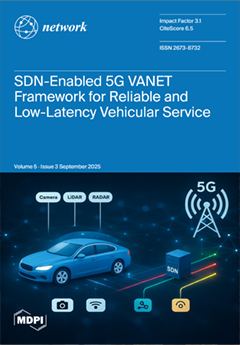Cascading link failures continue to imperil power grids, transport networks, and cyber-physical systems, yet the relationship between a network’s robustness at the moment of attack and its subsequent resiliency remains poorly understood. We introduce a dynamic framework in which connectivity-based cascades and distributed
[...] Read more.
Cascading link failures continue to imperil power grids, transport networks, and cyber-physical systems, yet the relationship between a network’s robustness at the moment of attack and its subsequent resiliency remains poorly understood. We introduce a dynamic framework in which connectivity-based cascades and distributed self-healing act concurrently within each time-step. Failure is triggered when a node’s active-neighbor ratio falls below a threshold
; healing activates once the global fraction of inactive nodes exceeds trigger
and is limited by budget
. Two real data sets—a 332-node U.S. airport graph and a 1133-node university e-mail graph—serve as testbeds. For each graph we sweep the parameter quartet (
) and record (i) immediate robustness
, (ii) 90% recovery time T
90, and (iii) cumulative average damage. Results show that targeted hub removal is up to three times more damaging than random failure, but that prompt healing with
can halve T
90. Scatter-plot analysis reveals a non-monotonic correlation: high-
states recover quickly only when
and
are favorable, whereas low-
states can rebound rapidly under ample budgets. A multiplicative fit
(with
) captures these interactions. The findings demonstrate that structural hardening alone cannot guarantee fast recovery; resource-aware, early-triggered self-healing is the decisive factor. The proposed model and data-driven insights provide a quantitative basis for designing infrastructure that is both robust to failure and resilient in restoration.
Full article





